
Day 3, Sunday 20th November -
Khon Kaen
Turnaround.......100 House has proved more than satisfactory. The room, although on the 3rd floor is particularly spacious with even a sofa and coffee table and so cheap at 560 baht. We seem to have provisioned ourselves well for breakfast but my attention has to turn to retrieving my computer from Pak Chong so we can't hang about. We head back at just after 8.30am arriving an hour later. There's no time to fast charge our equipment so we'll just have to conserve power the best we can.
Sung Noen Railway Station.......With a quick turnaround we head back to Nakhon Ratchasima before which we allow ourselves the luxury of our first visit to a site of interest. Heading into Sung Noen, I'm surprised to see extensive work on Thailand's High-Speed Train line where I wasn't expecting it this far from Bangkok but I haven't arrived here just to look to the future but rather to look back into the past to the birth of Thailand's railway.
Construction of the Sung Noen Railway Station along Thailand's first Royal Railway Line, the Bangkok-Nakhon Ratchasima line began on 9th March 1891 by German engineer, Mr Luis Weiler, who supervised the construction. Later he became the director general of the Siamese railways during the reign of King Rama V (King Chulalongkorn). His Highness arrived to open the railway in Nakhon Ratchasima on 21 December 1900.
Sung Noen station is a wooden building mostly made from dark red meranti wood. It consists of two stories on a square base and has a gable roof with long overhanging eaves no doubt with some German artistic influence.
At last, I have something substantial to record and as we head around the Nakhon Ratchasima bypass it's quickly followed by another albeit one I've visited before noting that the lighting conditions on that occasion were poor quite late in the day.
Prasat Hin Phanom Wan.......Prasat Hin Phanom Wan temple is located in Ban Pho in Mueang district. It is a Hindu Temple constructed between the 9th and 11th Century A.D. Evidence from archaeological finds indicate that this temple was built on a pre-historic site dating back to 500 B.C. In the 9th Century there were at least 8 brick buildings here, brick being the main building material during earlier construction but by the 11th Century the use of sandstone became commonplace. The complex includes the Principal Tower and a smaller tower enclosed by a boundary wall. Following abandonment, Phanom Wan became a Buddhist temple sometime late in the 13th Century.
Ku Kaew - It's time for noodles on the roadside. The plan for today is to arrive in Khon Kaen for a football game in the evening and to take in a number of attractions before then if that were possible. However, by 3pm we've hardly crossed the provincial border into Khon Kaen province and must arrive at our hotel no later than 4.30pm. That should allow for one of those attractions to be visited before then. The detour should lose no more than 30 minutes.
Arriving at Ku Keaw (glass prasat) it's no surprise to find an arokayasala (medical station) identical to many I've visited in lower Esan. What I am surprised about is it's location this far north which fixes the boundary of the mighty Khmer Empire further away from it's power base than I had expected.
Located in Don Chang, Mueang district, this is one of the 102 sanctuaries established during the reign of Jayavarman VII (1177-1220 A.D.) under the influence of Mahayana Buddhism. Typically, this type of sanctuary consists of 1) The Main Sanctuary, 2) The Banalai at the corner of the front entrance accommodating sculptures, 3) The Kamphaeng Kaew (laterite wall), 4) The Gopura (gateway) located to the east and 5) The Baray (laterite pond) to the northeast outside the boundary wall. The monument covers an area of 4,056 square metres.
During excavation at Ku Kaeo, many artifacts were found such as inscriptions and sculptures currently housed in Khon Kaen National Museum. The arokayasala Ku Kaeo was published in the Royal Gazette twice. The first in 1957 and the second in 1982.
Stalemate.......Obviously, I'm thrilled by this latest discovery but now we must head straight into Khon Kaen and prepare for this evening's activity. At Le Lerts Hotel we check in and head straight back out to the municipal stadium where we have time to grab takeaway food and drink and settle down to watch the local team. Khon Kaen United play Police Tero who I will be watching for the third time. As far as the game is concerned it's bit disappointing a goalless draw with neither team finding any rhythm. Previously I've watched Tero they have been on the winning side. Now, let's enjoy the comfort of Le Lerts.
Next Page.
Khon Kaen
Turnaround.......100 House has proved more than satisfactory. The room, although on the 3rd floor is particularly spacious with even a sofa and coffee table and so cheap at 560 baht. We seem to have provisioned ourselves well for breakfast but my attention has to turn to retrieving my computer from Pak Chong so we can't hang about. We head back at just after 8.30am arriving an hour later. There's no time to fast charge our equipment so we'll just have to conserve power the best we can.
Sung Noen Railway Station.......With a quick turnaround we head back to Nakhon Ratchasima before which we allow ourselves the luxury of our first visit to a site of interest. Heading into Sung Noen, I'm surprised to see extensive work on Thailand's High-Speed Train line where I wasn't expecting it this far from Bangkok but I haven't arrived here just to look to the future but rather to look back into the past to the birth of Thailand's railway.
Construction of the Sung Noen Railway Station along Thailand's first Royal Railway Line, the Bangkok-Nakhon Ratchasima line began on 9th March 1891 by German engineer, Mr Luis Weiler, who supervised the construction. Later he became the director general of the Siamese railways during the reign of King Rama V (King Chulalongkorn). His Highness arrived to open the railway in Nakhon Ratchasima on 21 December 1900.
Sung Noen station is a wooden building mostly made from dark red meranti wood. It consists of two stories on a square base and has a gable roof with long overhanging eaves no doubt with some German artistic influence.
At last, I have something substantial to record and as we head around the Nakhon Ratchasima bypass it's quickly followed by another albeit one I've visited before noting that the lighting conditions on that occasion were poor quite late in the day.
Prasat Hin Phanom Wan.......Prasat Hin Phanom Wan temple is located in Ban Pho in Mueang district. It is a Hindu Temple constructed between the 9th and 11th Century A.D. Evidence from archaeological finds indicate that this temple was built on a pre-historic site dating back to 500 B.C. In the 9th Century there were at least 8 brick buildings here, brick being the main building material during earlier construction but by the 11th Century the use of sandstone became commonplace. The complex includes the Principal Tower and a smaller tower enclosed by a boundary wall. Following abandonment, Phanom Wan became a Buddhist temple sometime late in the 13th Century.
Ku Kaew - It's time for noodles on the roadside. The plan for today is to arrive in Khon Kaen for a football game in the evening and to take in a number of attractions before then if that were possible. However, by 3pm we've hardly crossed the provincial border into Khon Kaen province and must arrive at our hotel no later than 4.30pm. That should allow for one of those attractions to be visited before then. The detour should lose no more than 30 minutes.
Arriving at Ku Keaw (glass prasat) it's no surprise to find an arokayasala (medical station) identical to many I've visited in lower Esan. What I am surprised about is it's location this far north which fixes the boundary of the mighty Khmer Empire further away from it's power base than I had expected.
Located in Don Chang, Mueang district, this is one of the 102 sanctuaries established during the reign of Jayavarman VII (1177-1220 A.D.) under the influence of Mahayana Buddhism. Typically, this type of sanctuary consists of 1) The Main Sanctuary, 2) The Banalai at the corner of the front entrance accommodating sculptures, 3) The Kamphaeng Kaew (laterite wall), 4) The Gopura (gateway) located to the east and 5) The Baray (laterite pond) to the northeast outside the boundary wall. The monument covers an area of 4,056 square metres.
During excavation at Ku Kaeo, many artifacts were found such as inscriptions and sculptures currently housed in Khon Kaen National Museum. The arokayasala Ku Kaeo was published in the Royal Gazette twice. The first in 1957 and the second in 1982.
Stalemate.......Obviously, I'm thrilled by this latest discovery but now we must head straight into Khon Kaen and prepare for this evening's activity. At Le Lerts Hotel we check in and head straight back out to the municipal stadium where we have time to grab takeaway food and drink and settle down to watch the local team. Khon Kaen United play Police Tero who I will be watching for the third time. As far as the game is concerned it's bit disappointing a goalless draw with neither team finding any rhythm. Previously I've watched Tero they have been on the winning side. Now, let's enjoy the comfort of Le Lerts.
Next Page.
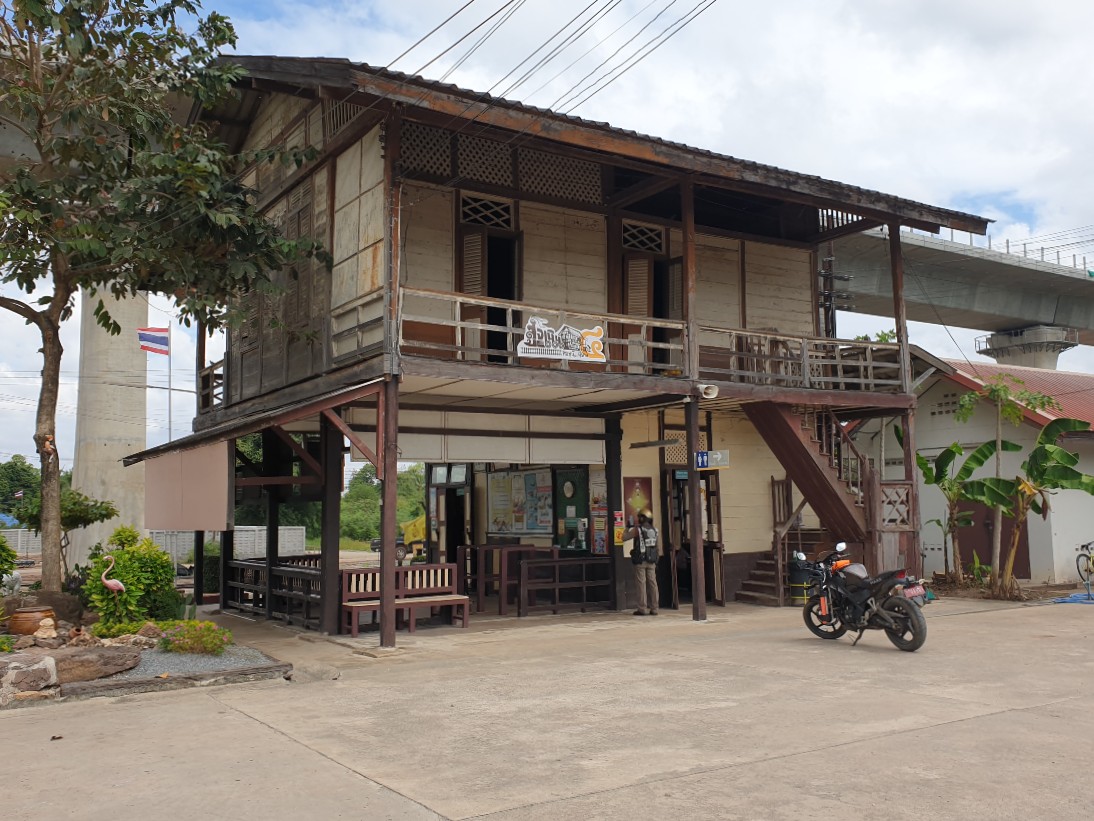
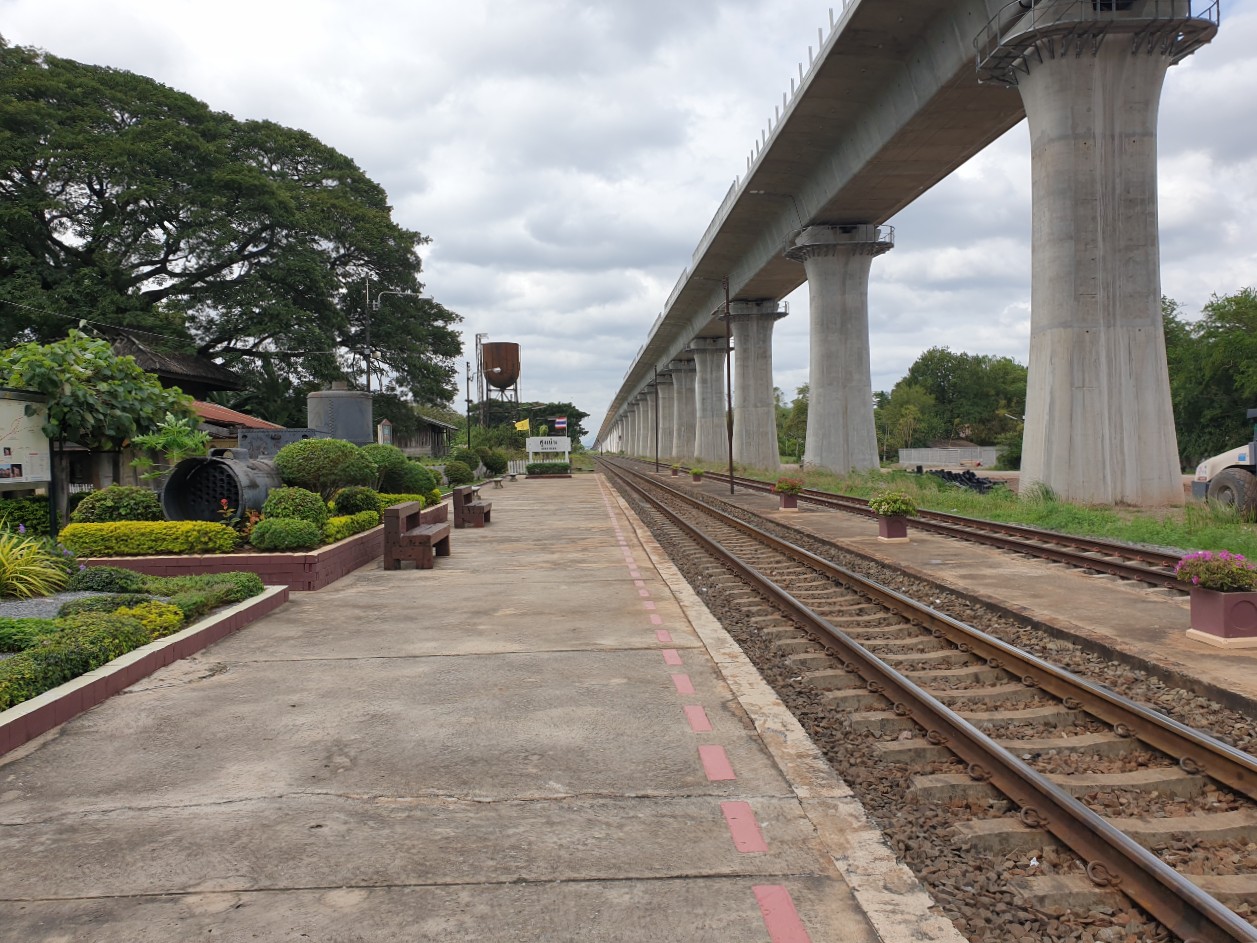
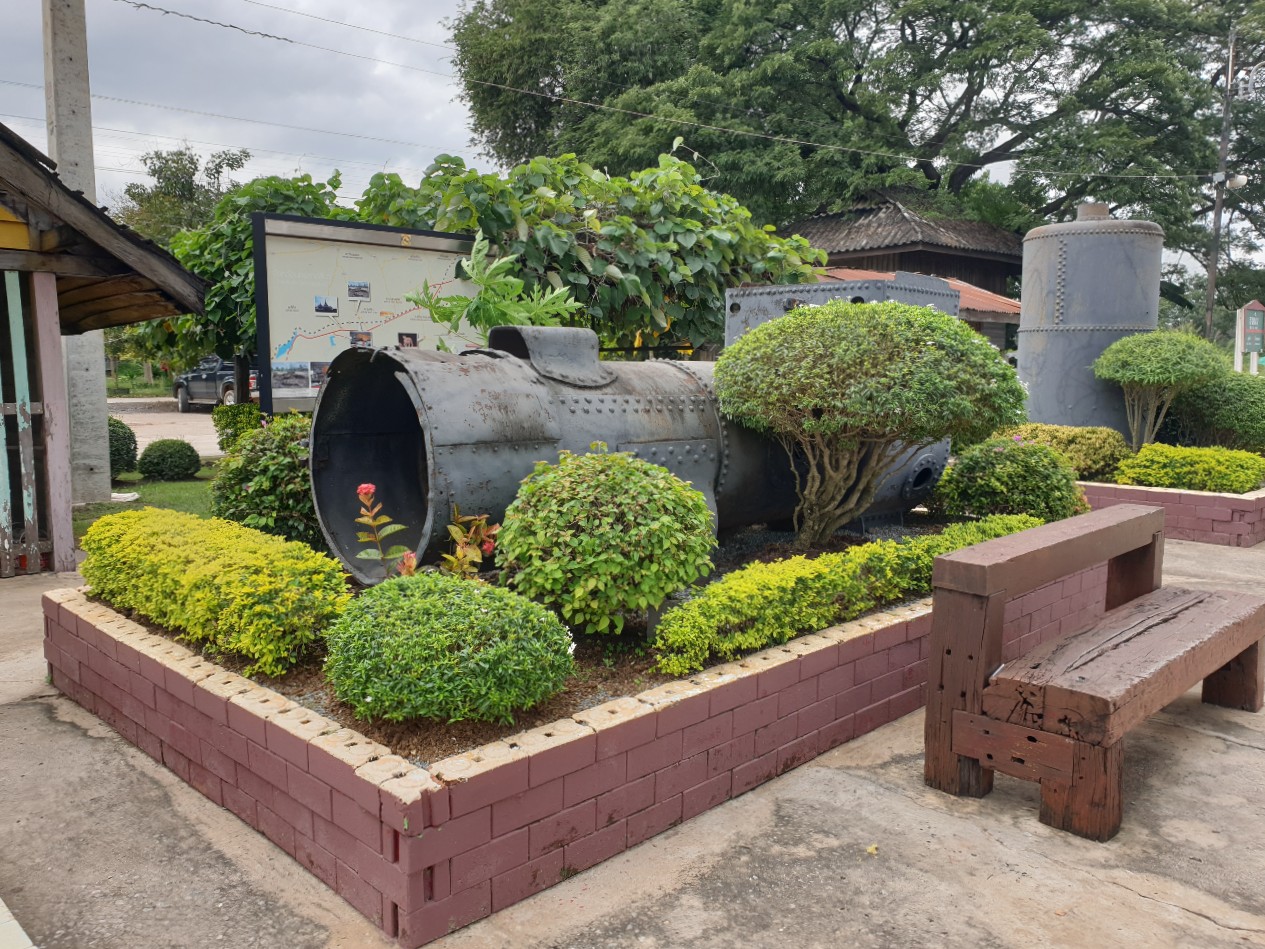
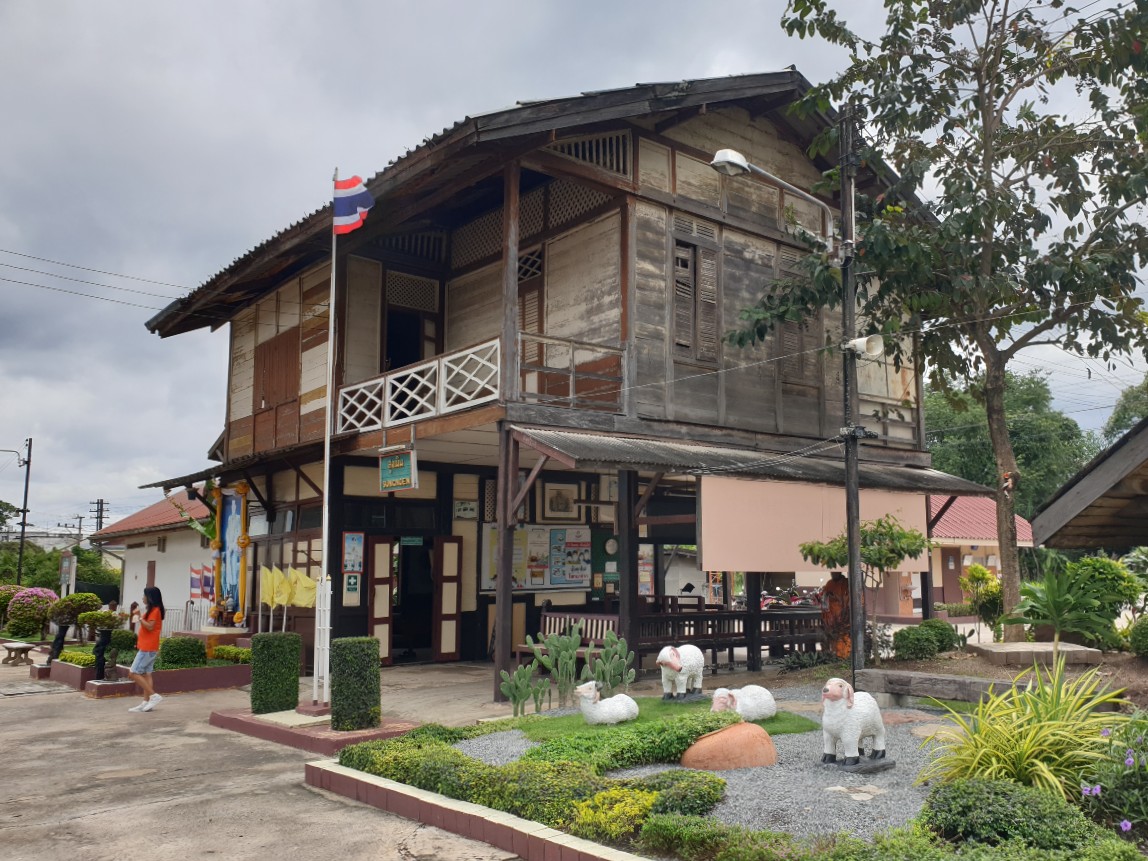
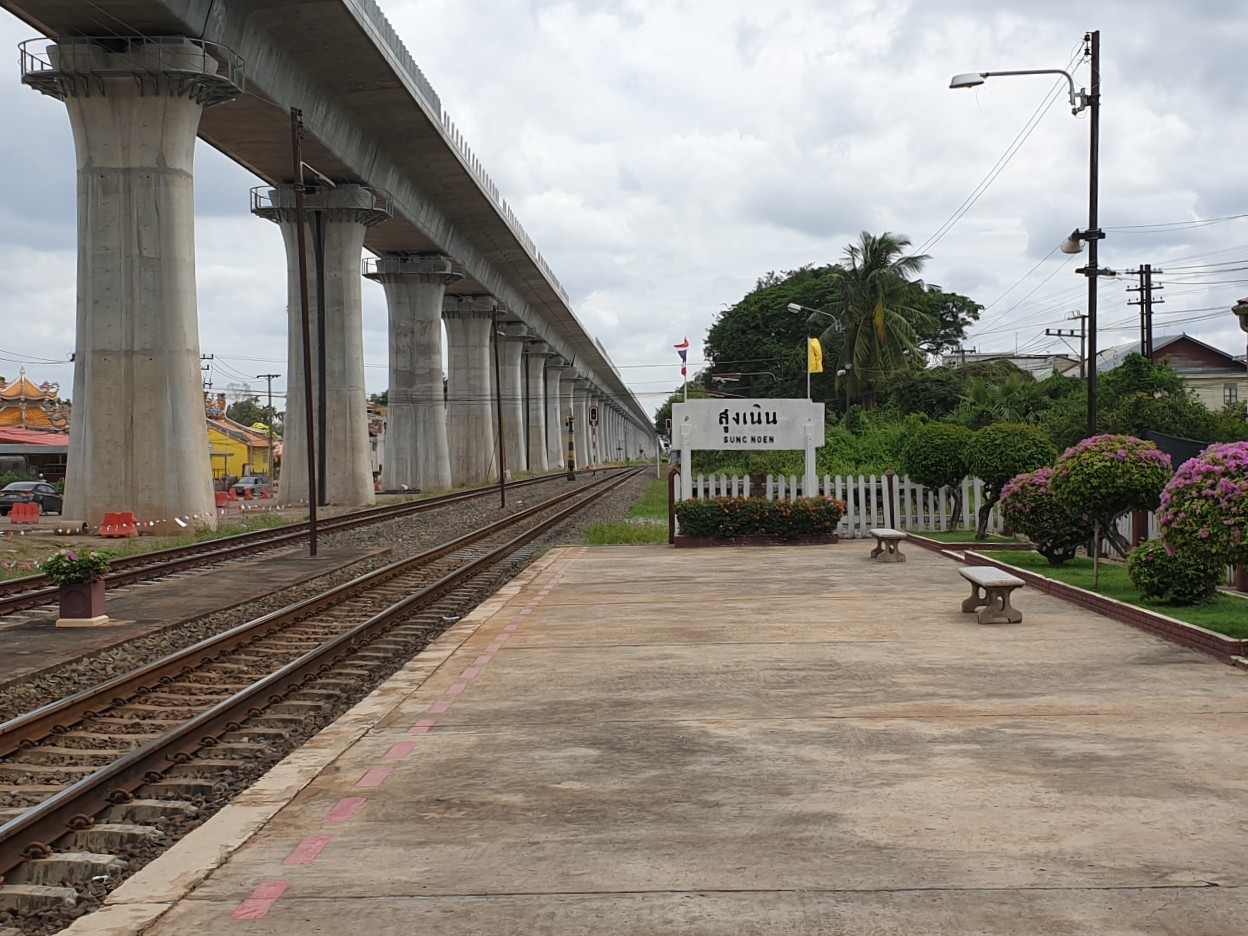
Sung Noen Railway Station, Sung Noen
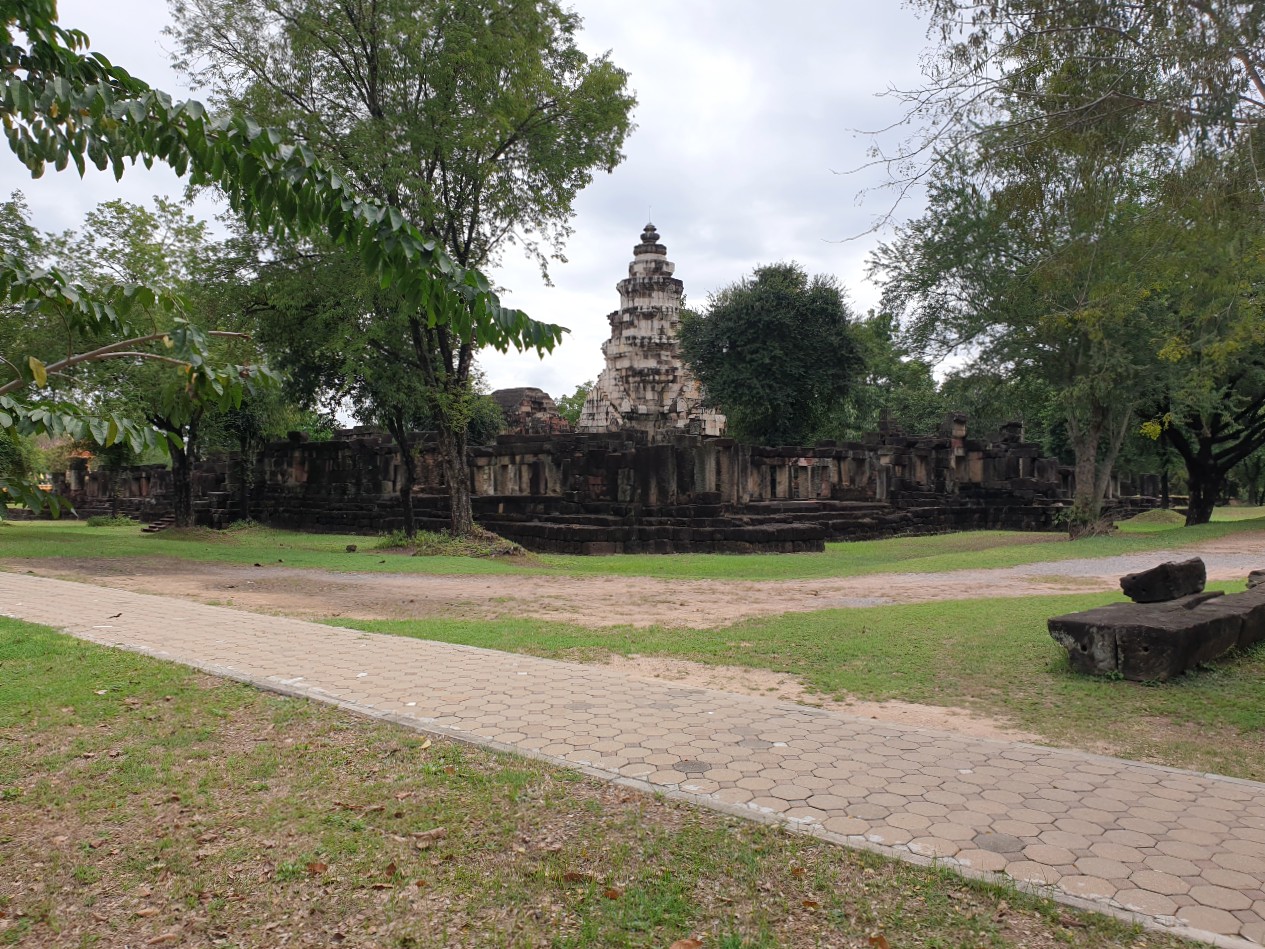
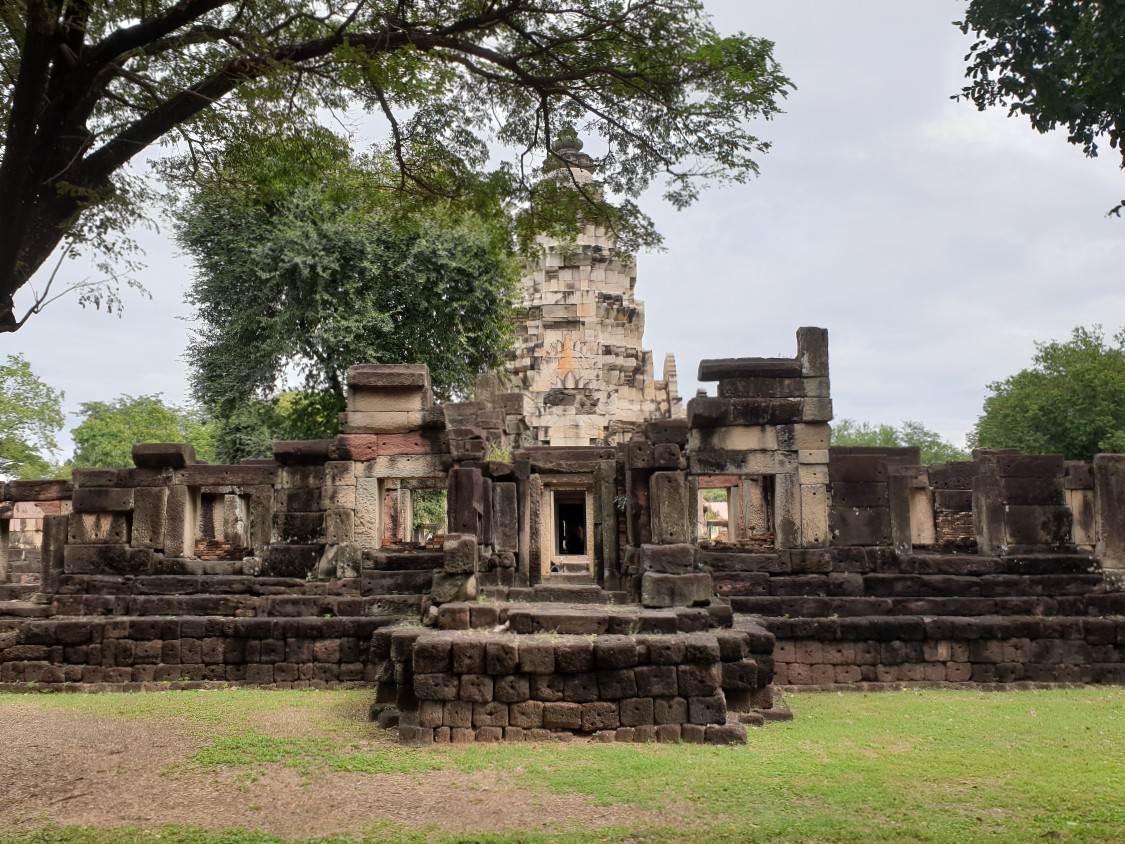
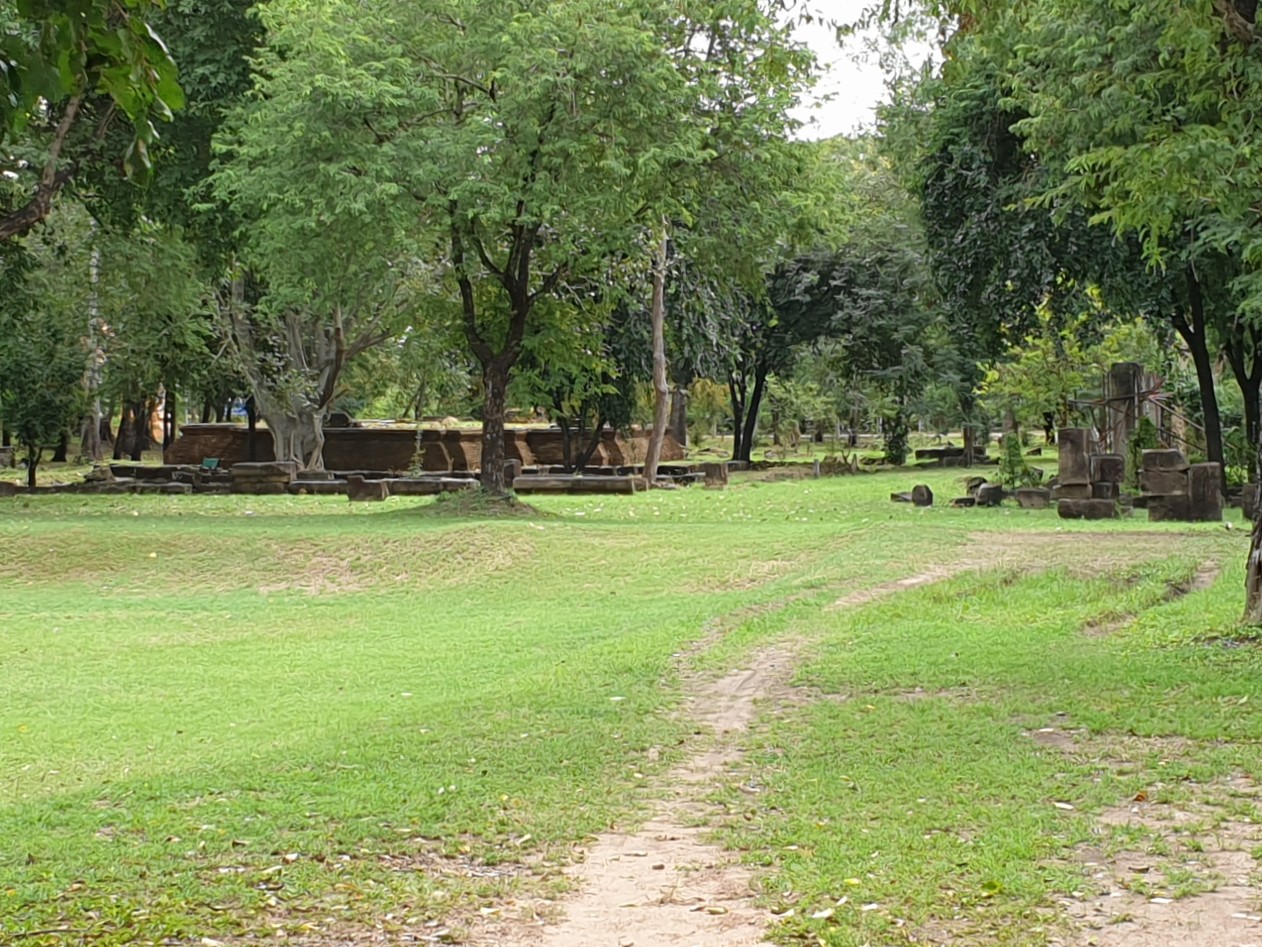
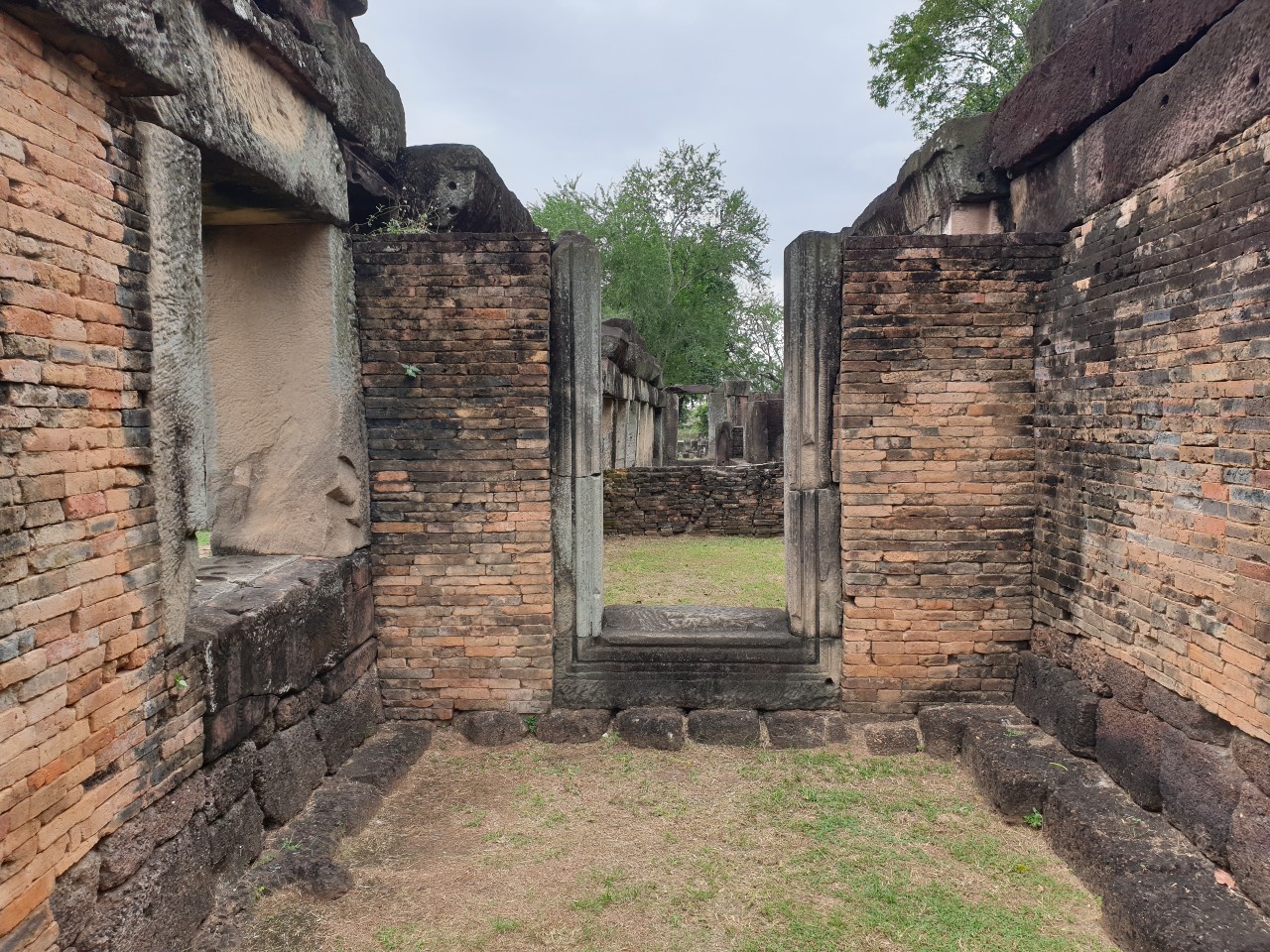
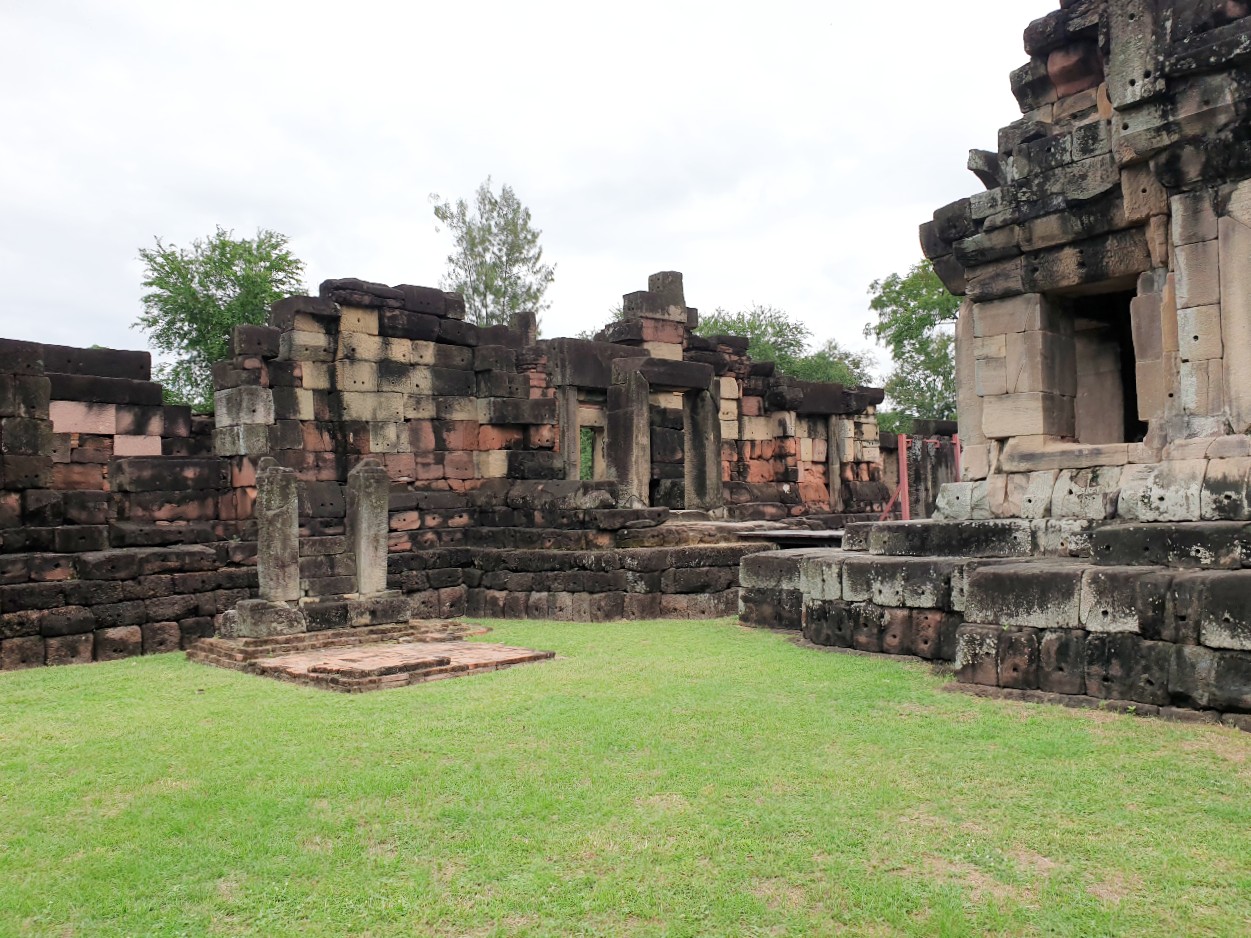
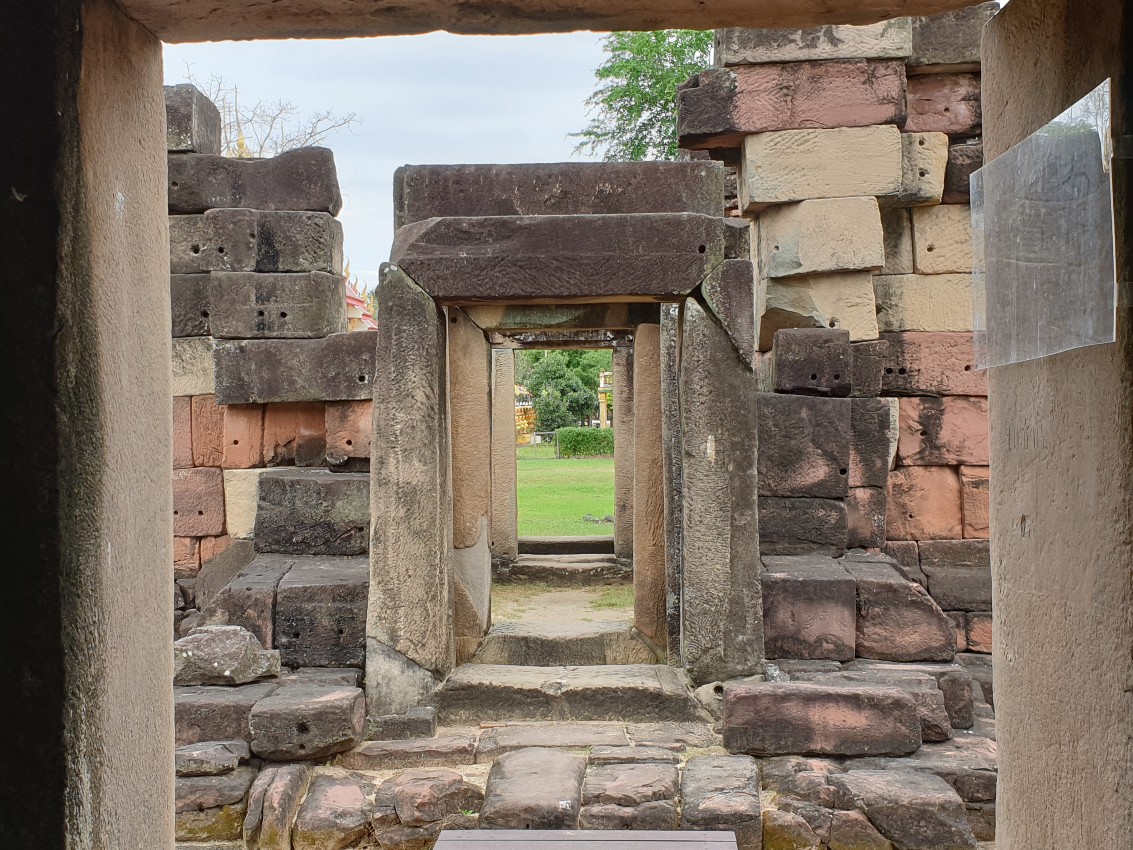
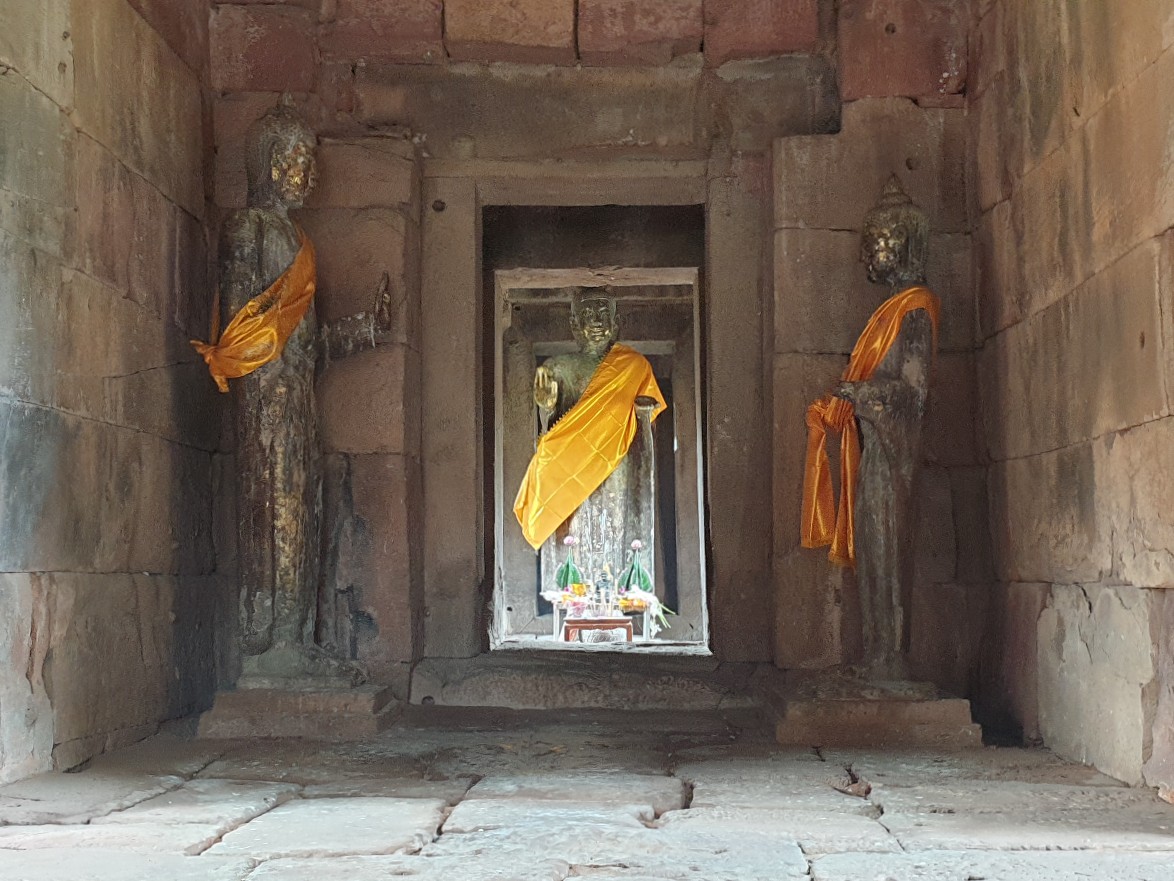
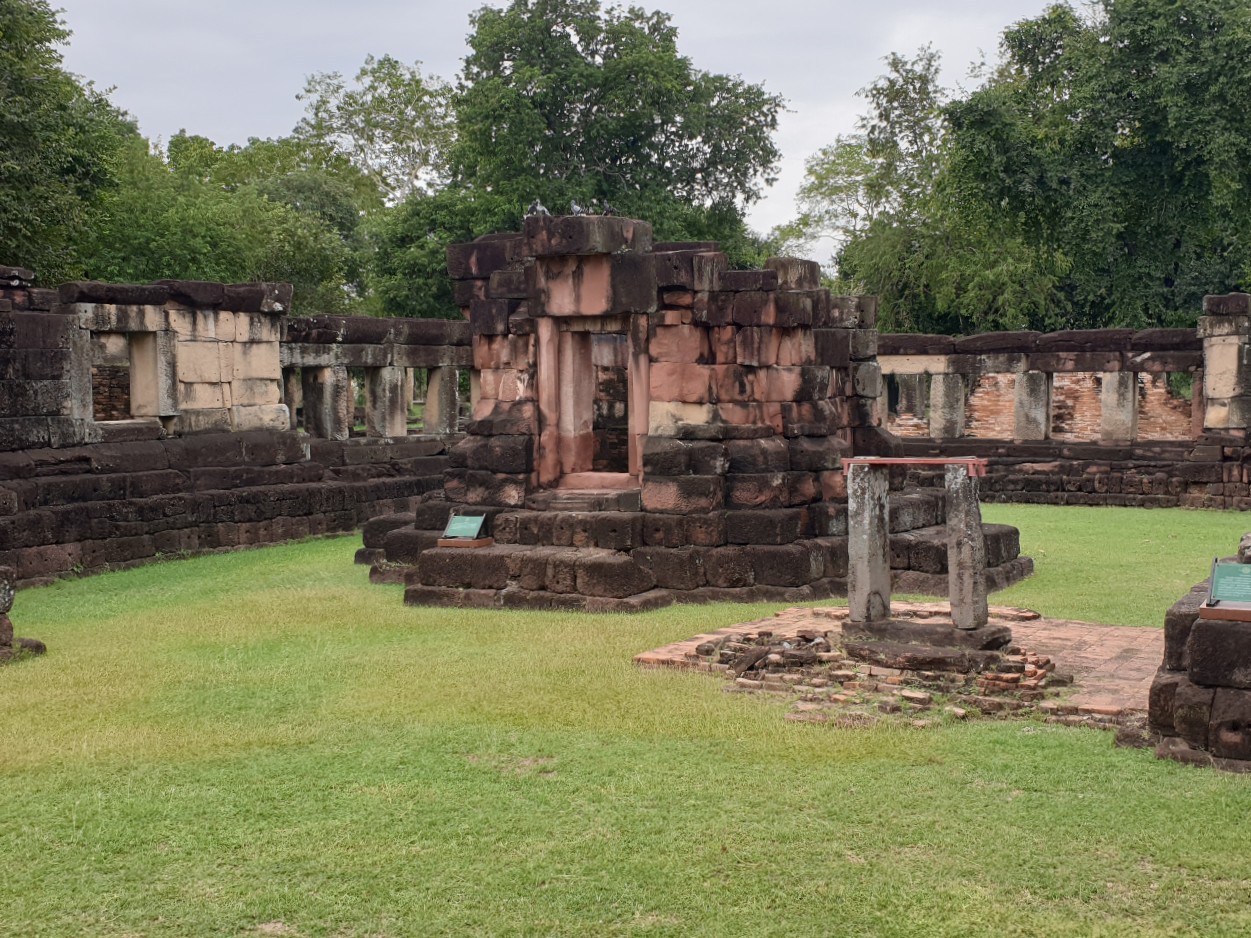
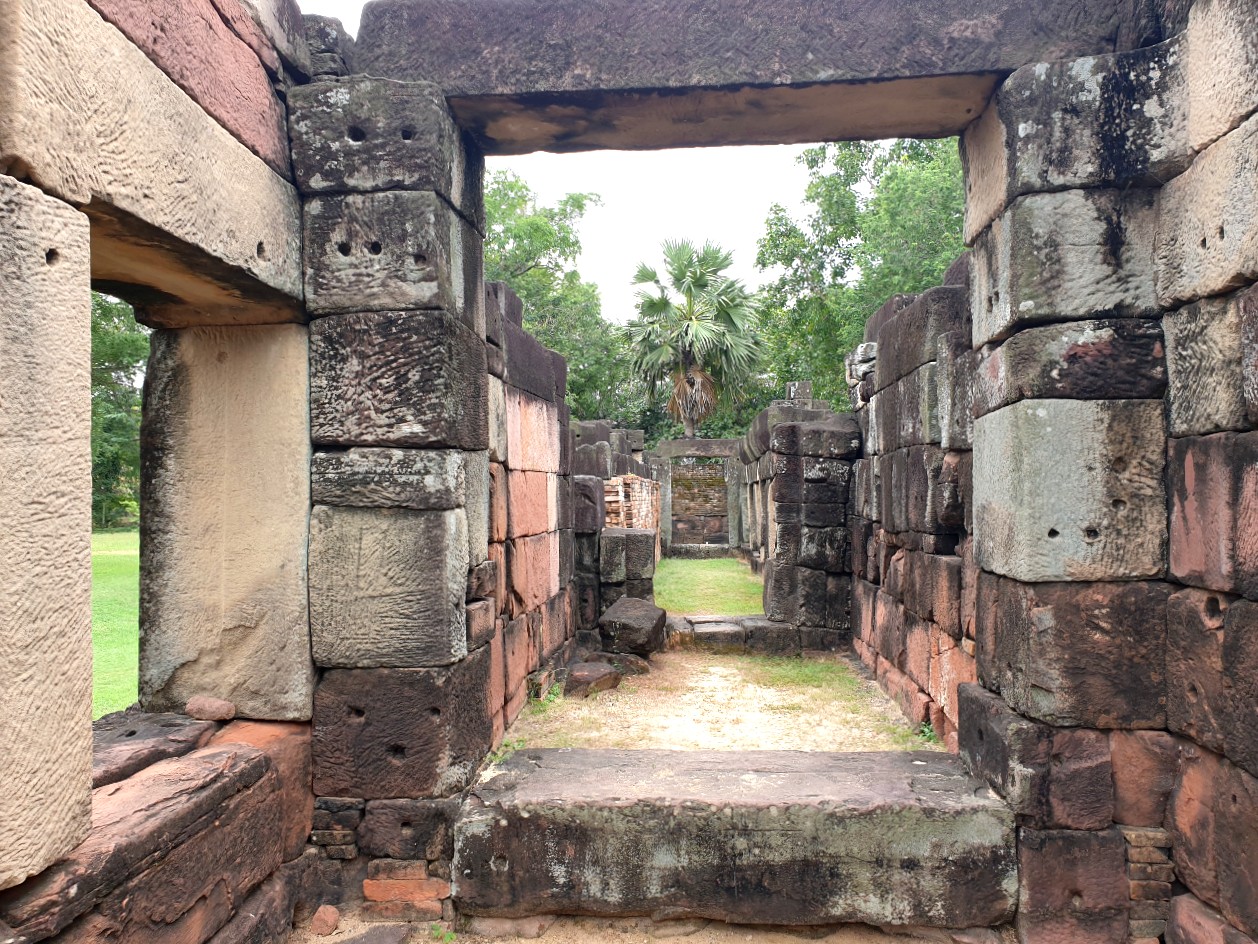
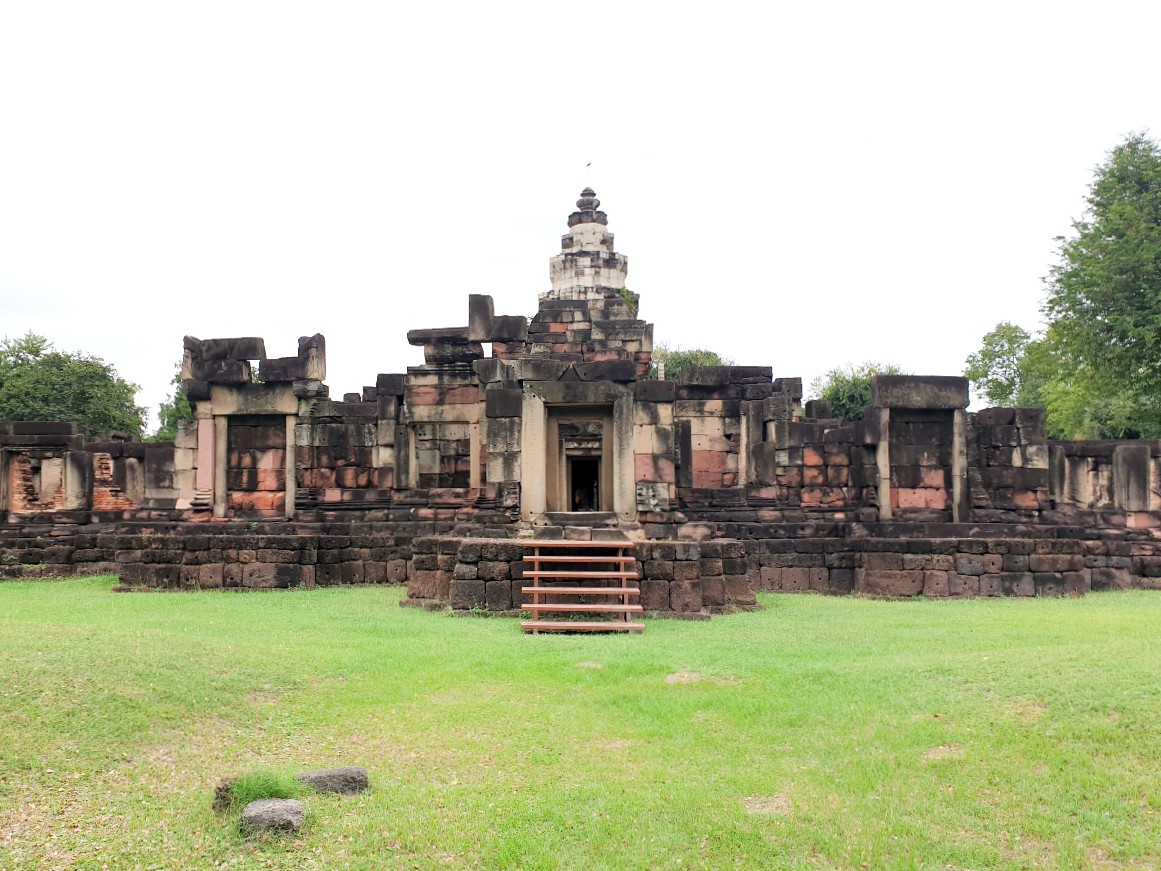
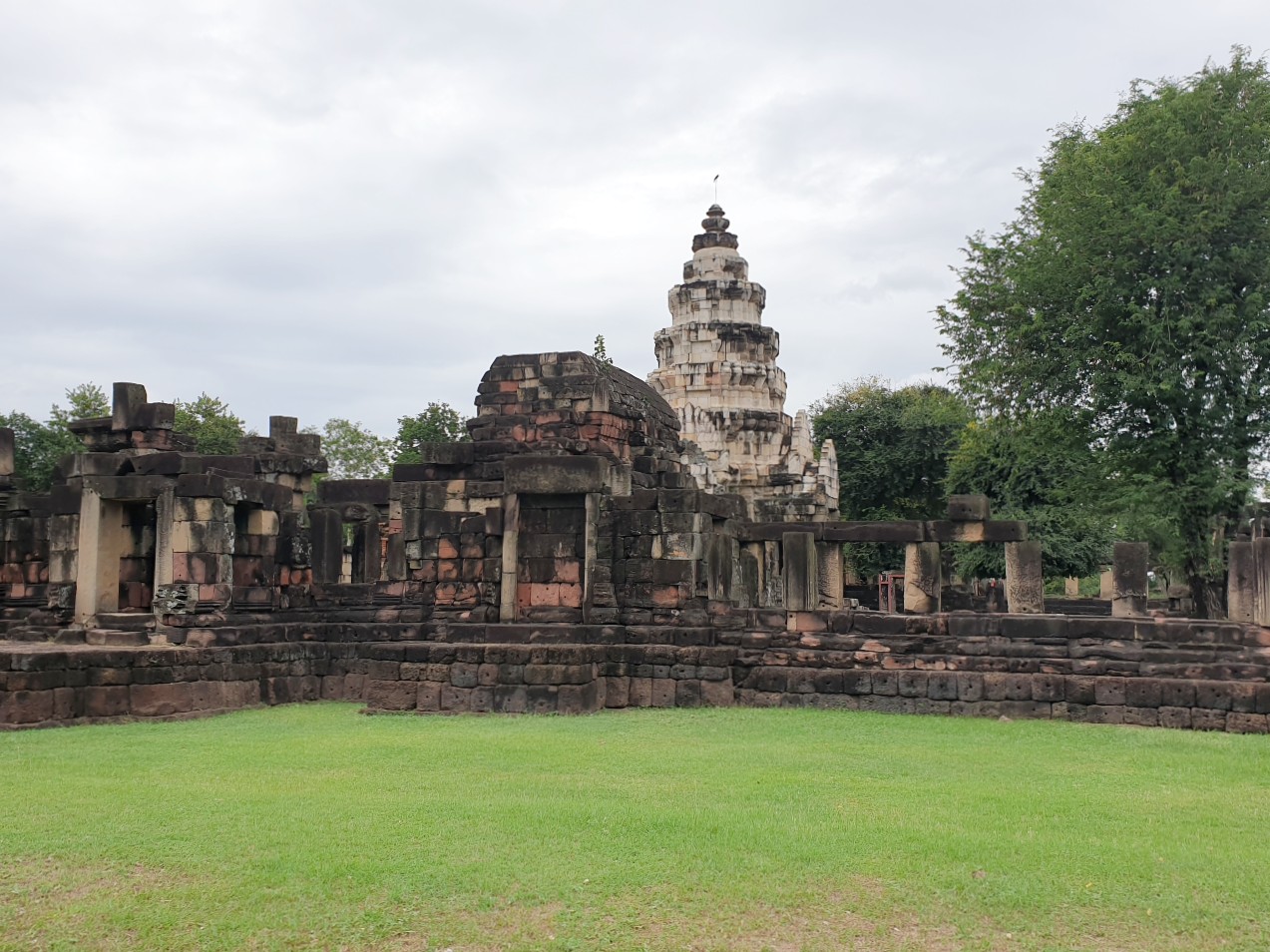
Prasat Hin Phanom Wan,
Mueang Nakhon Ratchasima District
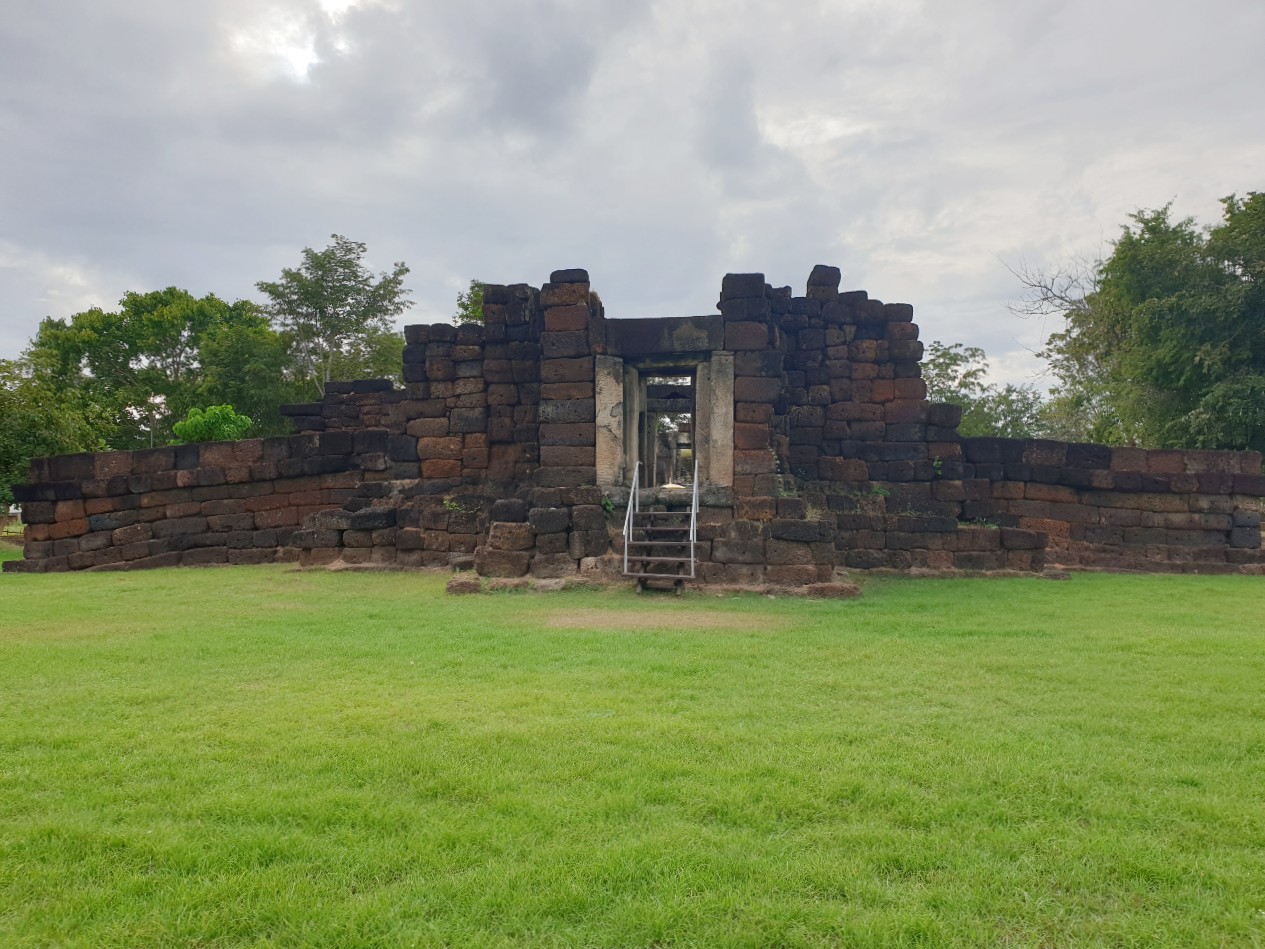
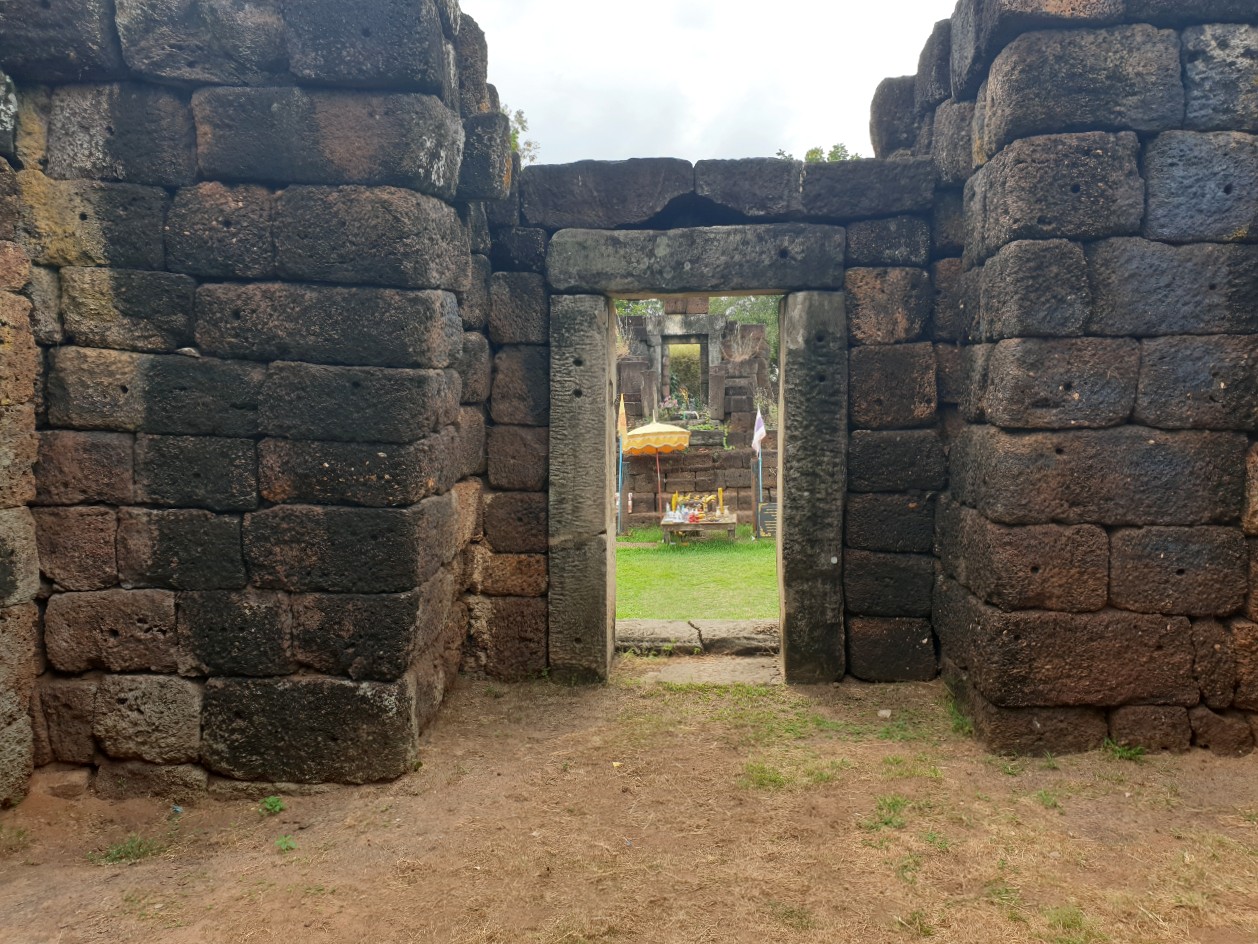
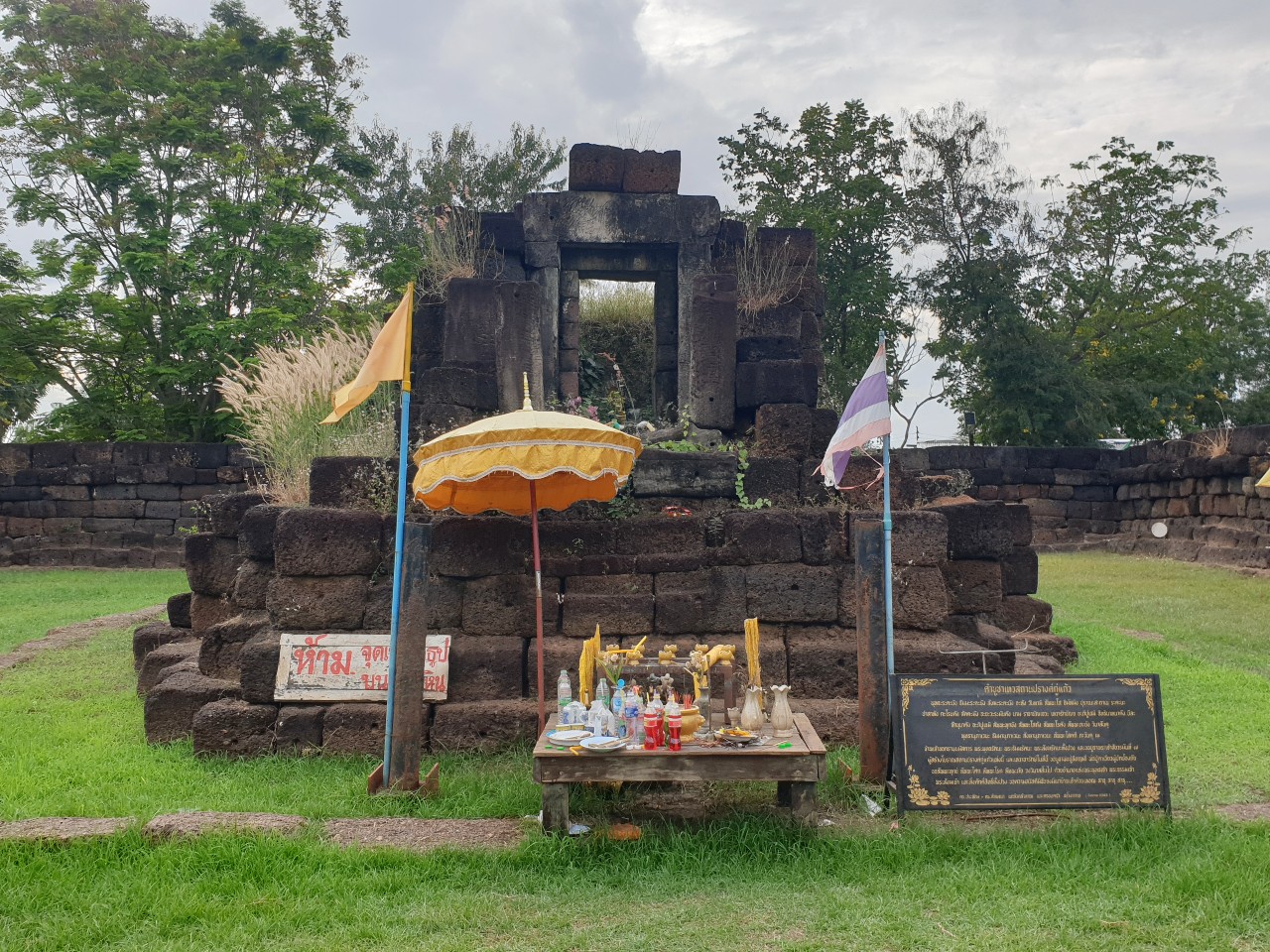
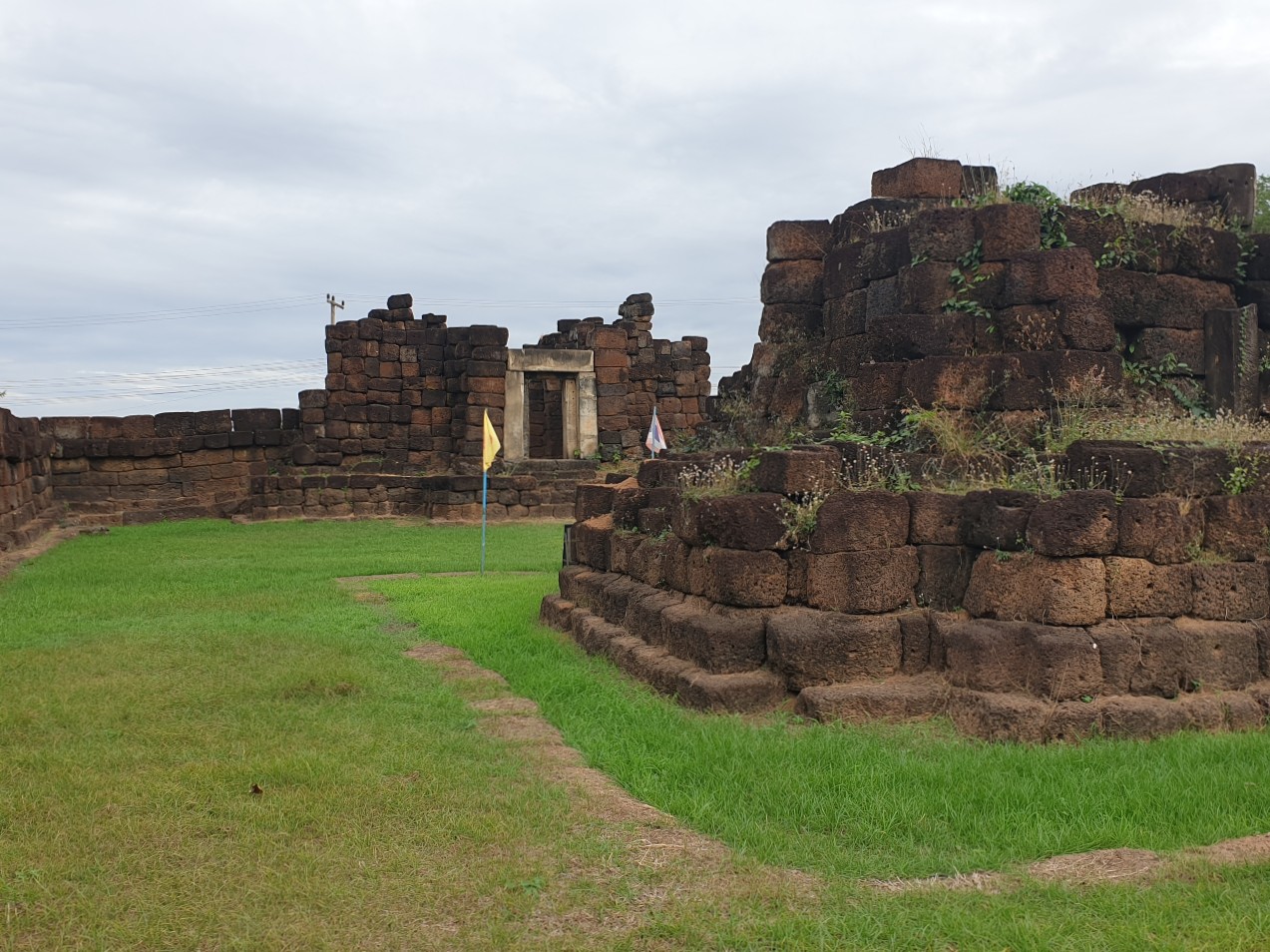
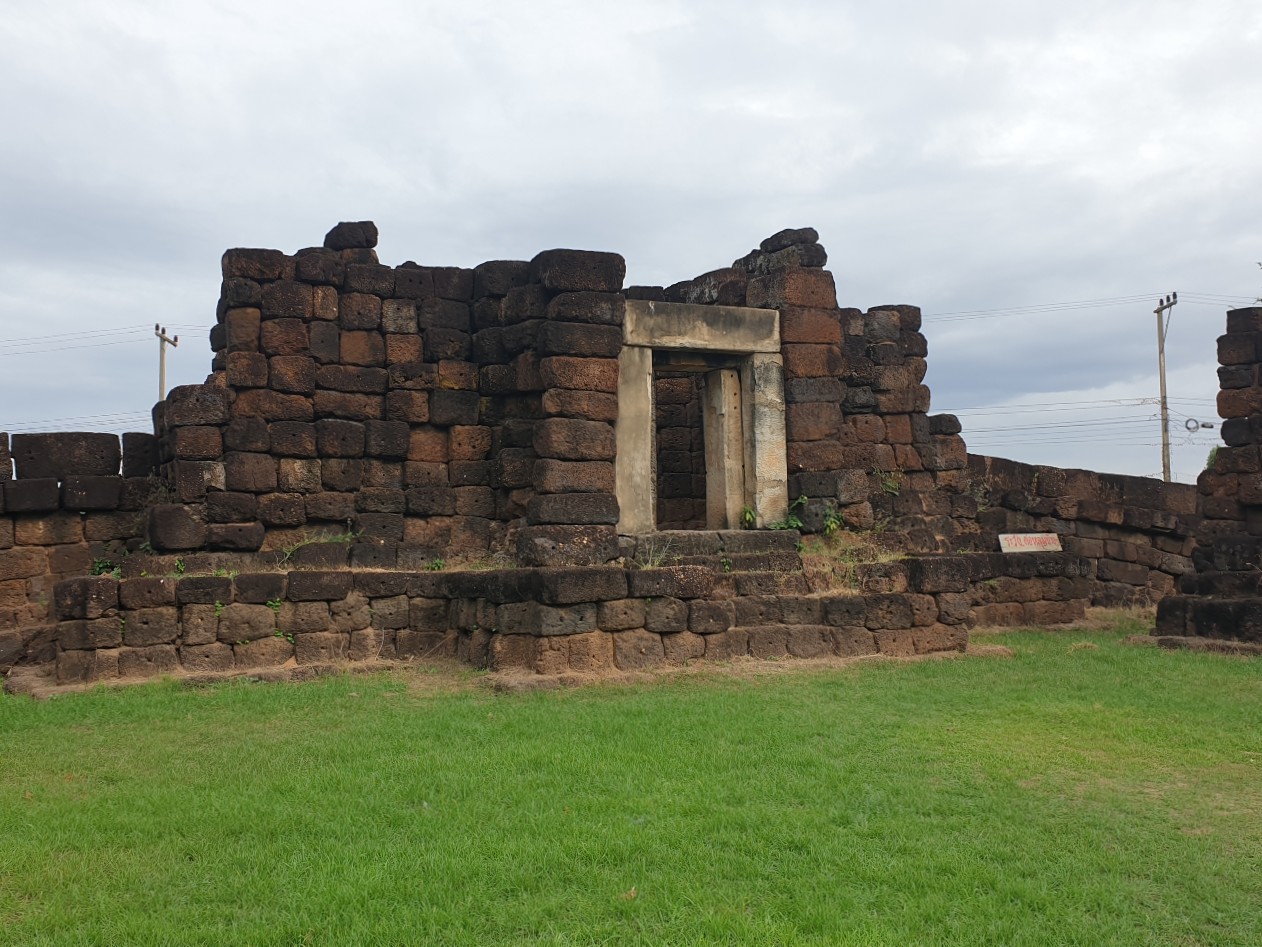
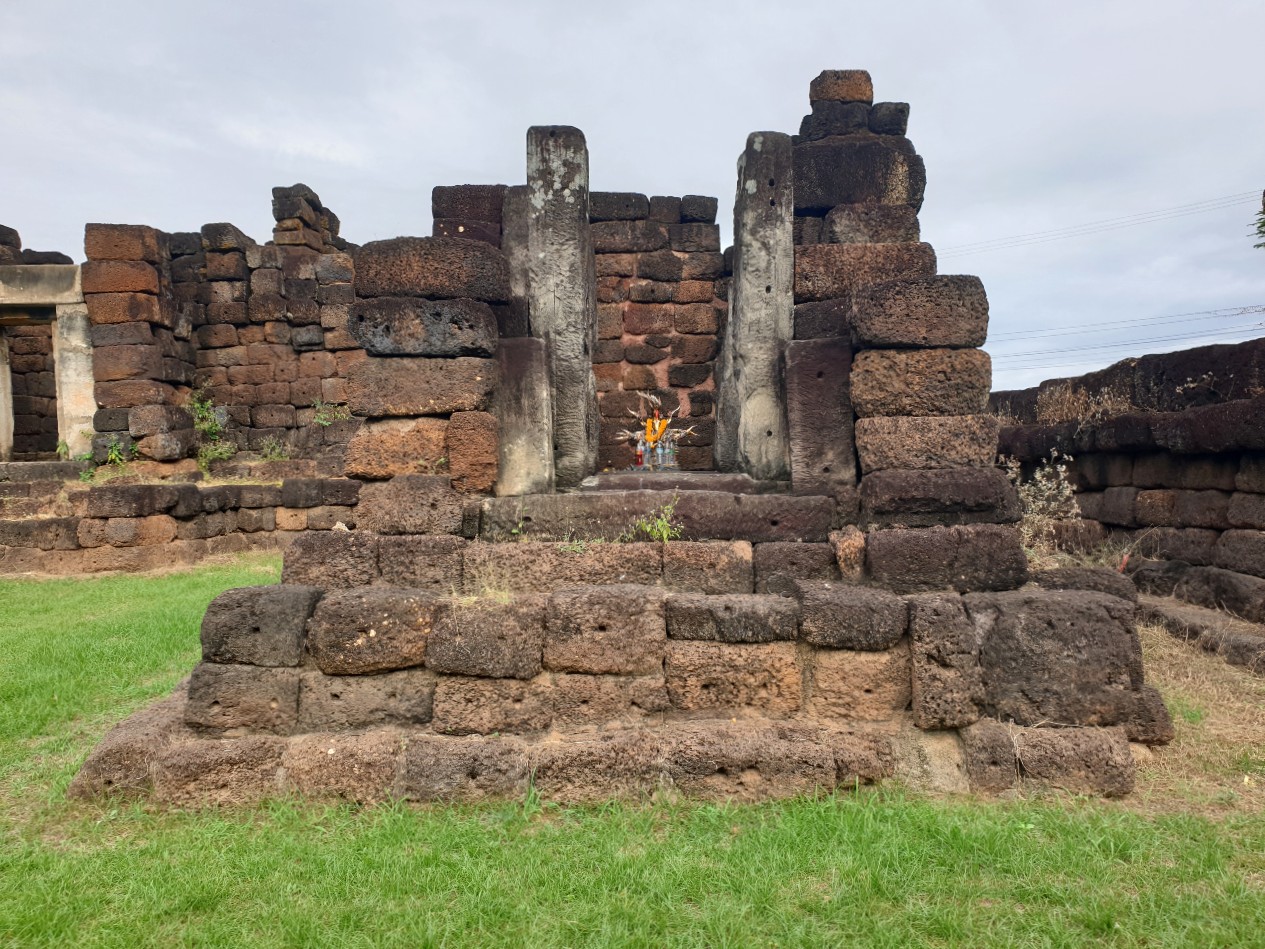
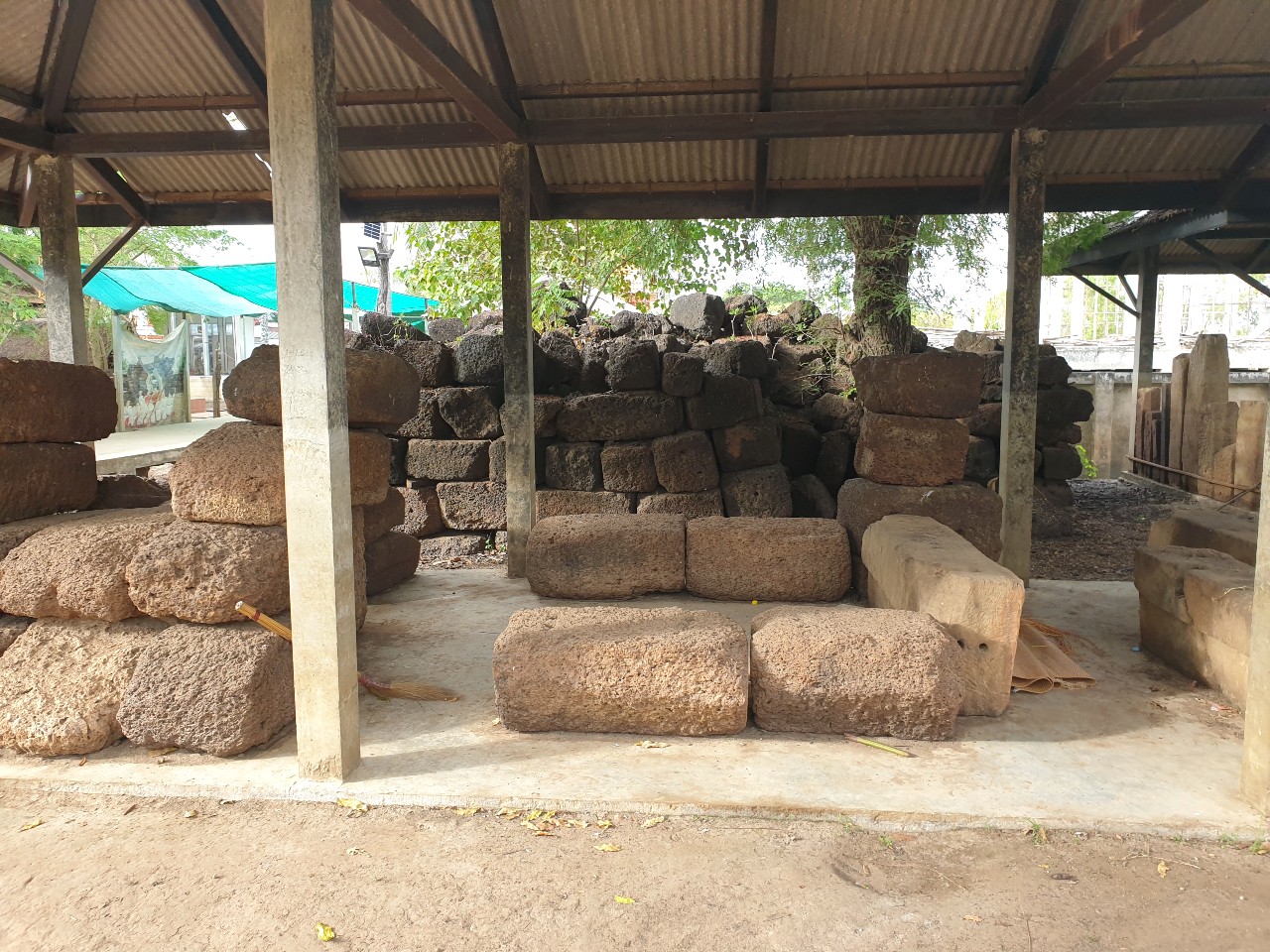
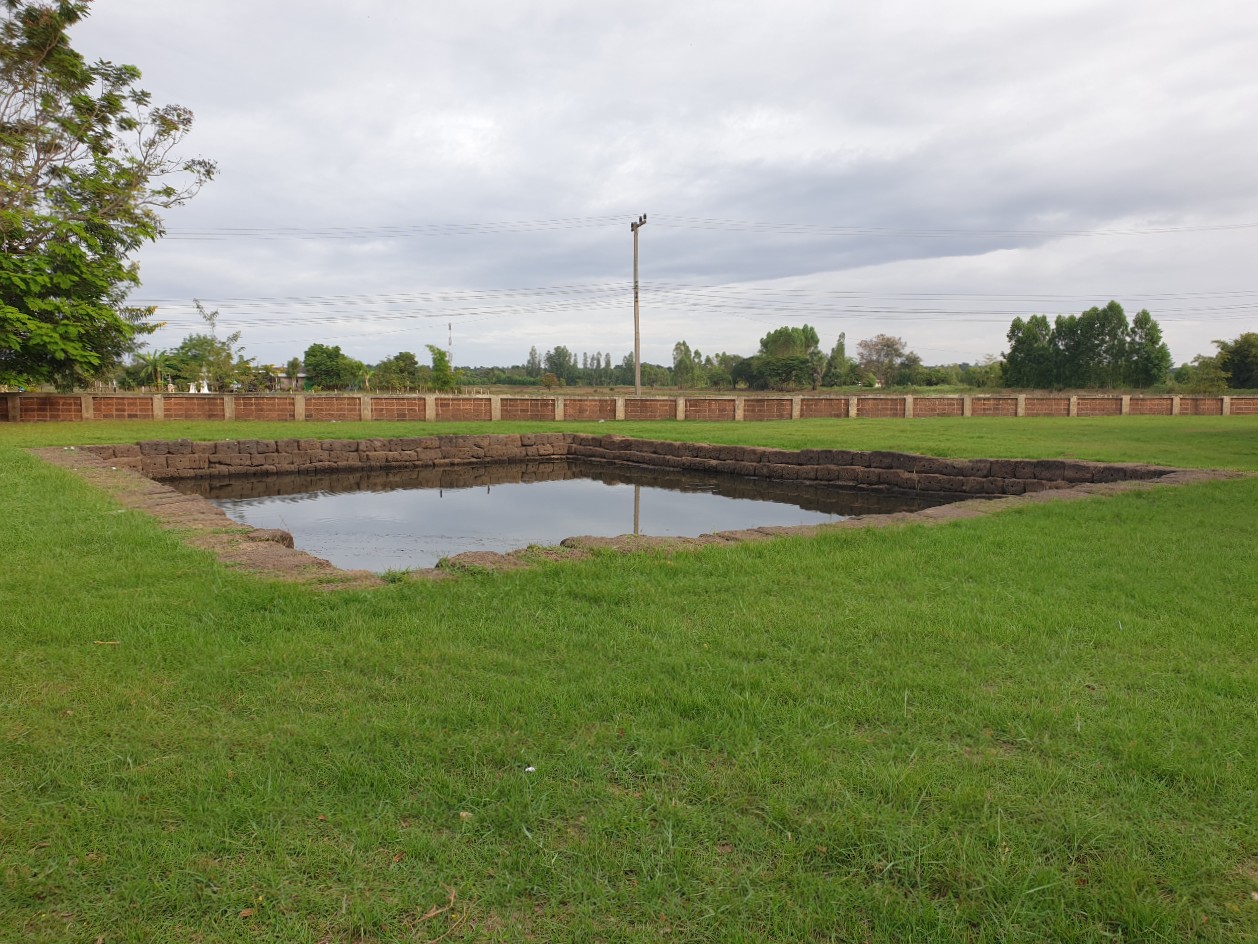
Prasat Ku Kaew, Mueang Khon Kaen District
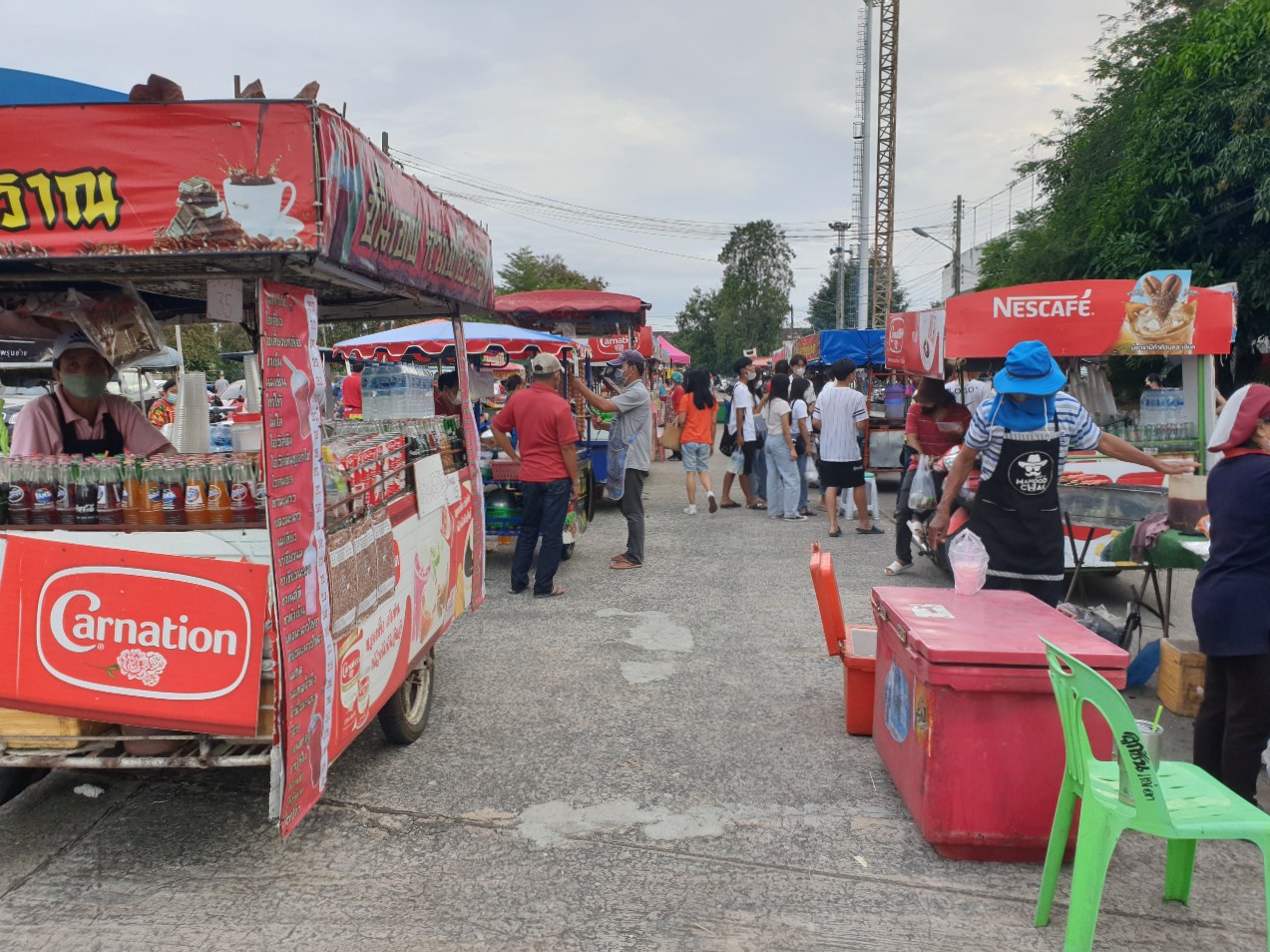
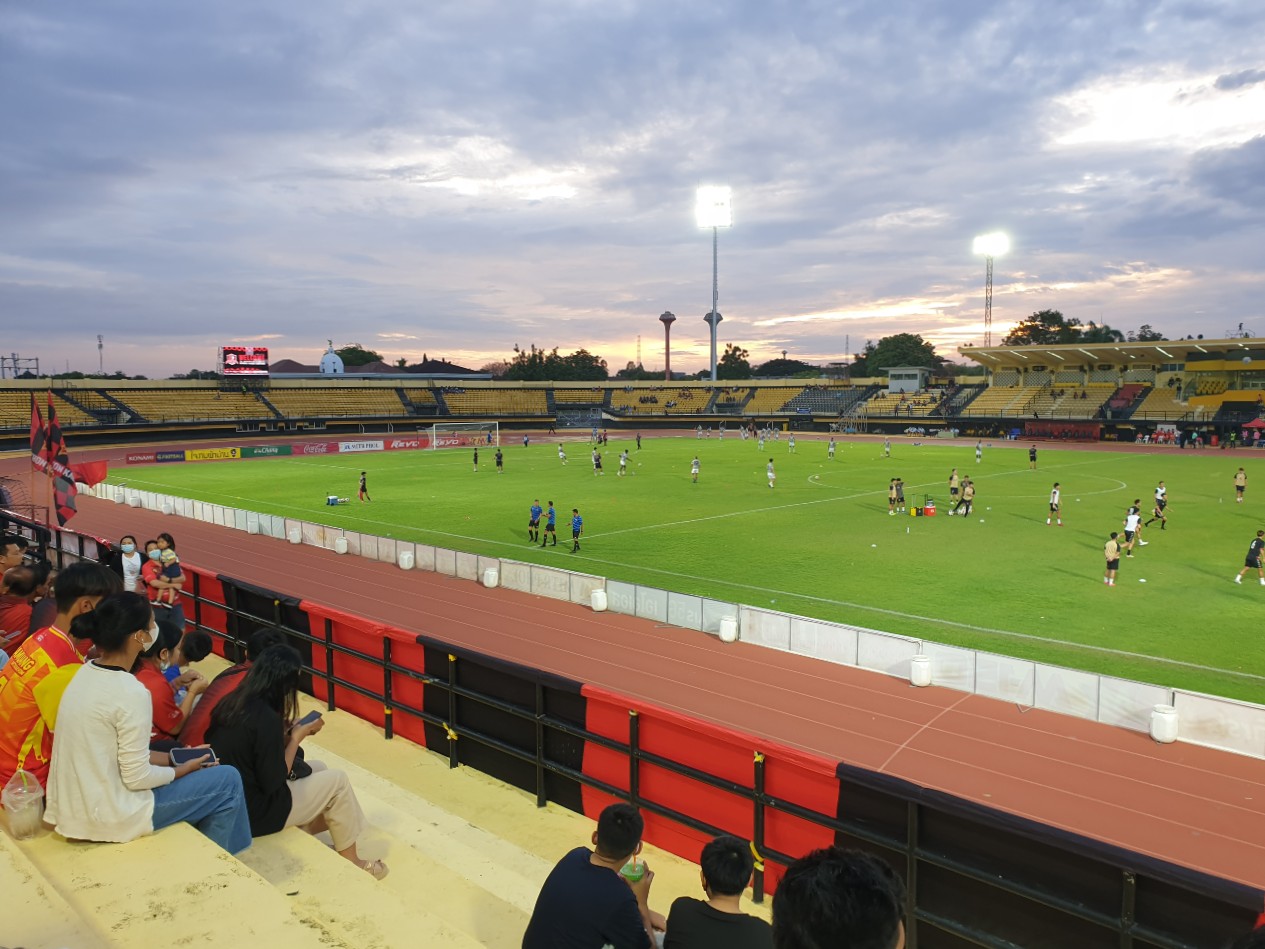
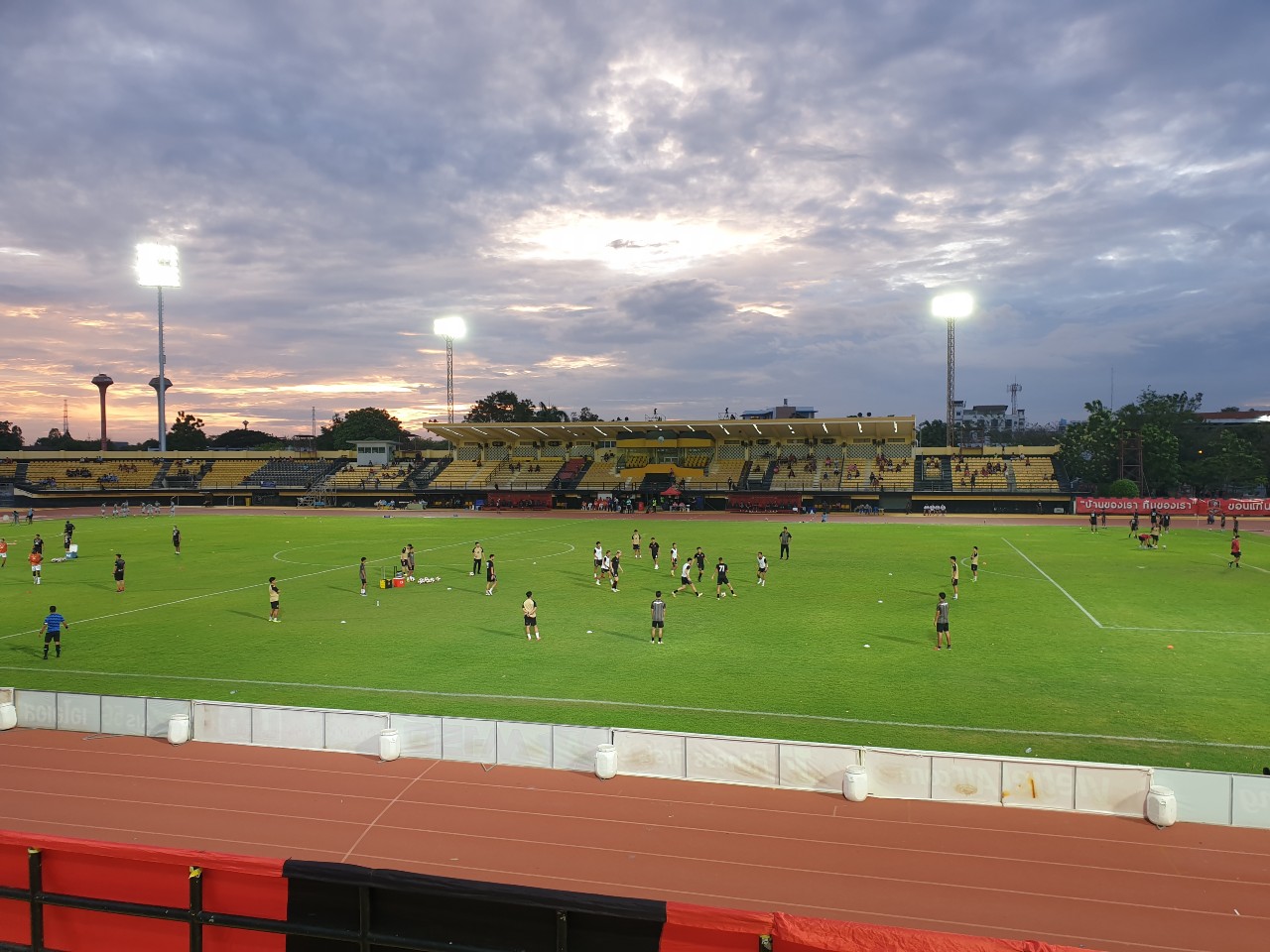
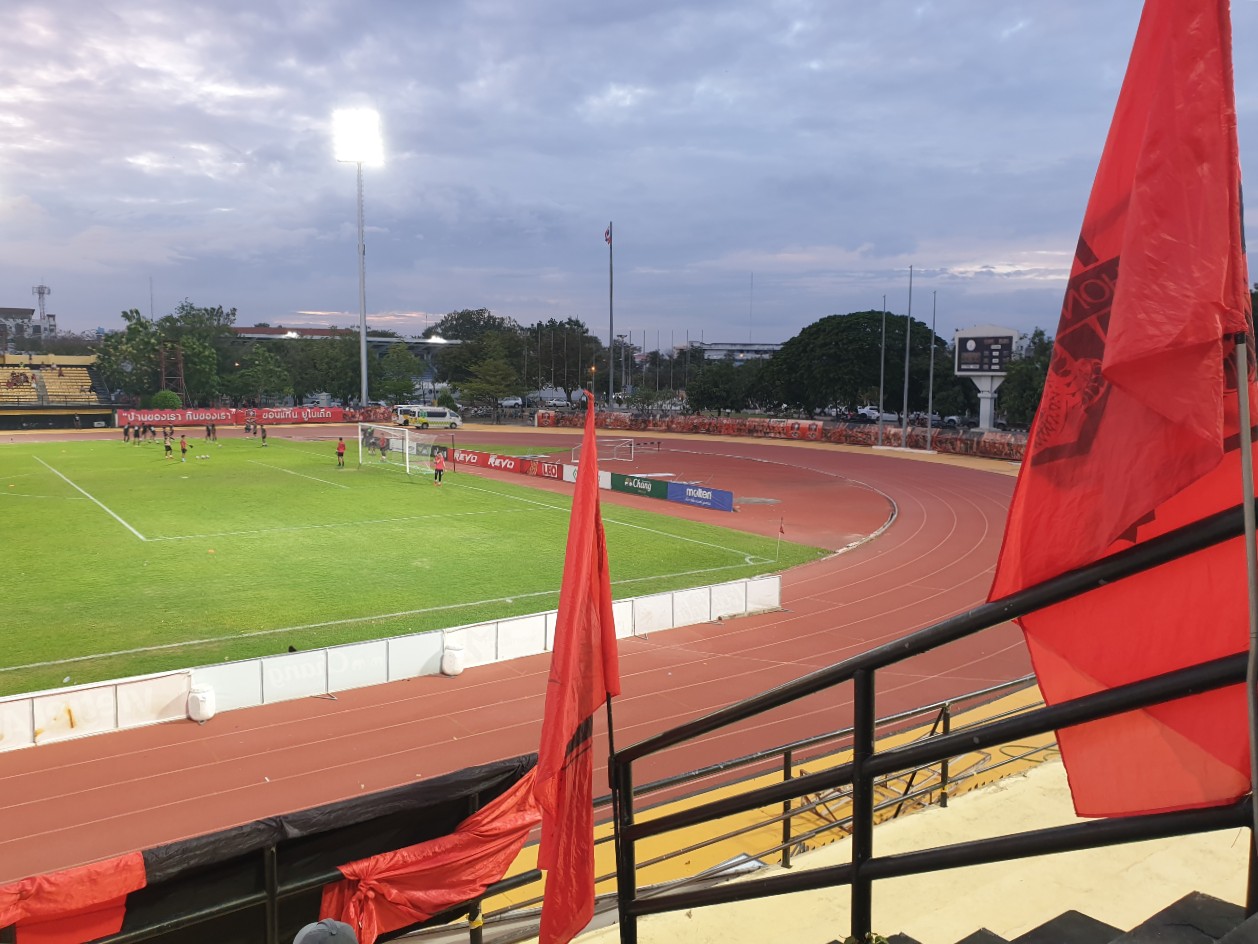
Khon Kaen Provincial Stadium,
Mueang Khon Kaen